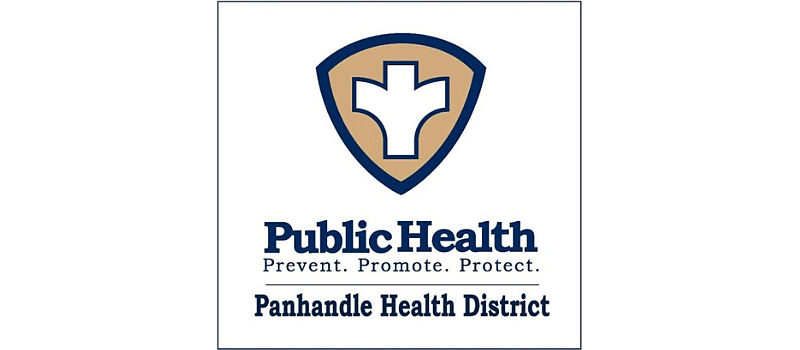PHD: COVID vaccine arrives this week
The Food and Drug Administration’s (FDA) advisory committee has recommended that the FDA authorize an Emergency Use Authorization (EUA) for the Pfizer Inc. and BioNTech Manufacturing COVID-19 vaccine. With this action, many may be wondering when the vaccine will be in our area and when we will be able to be vaccinated. The Advisory Committee on Immunization Practices (ACIP) will also need to provide their approval prior to any distribution of the vaccine.
“It’s important for the public to know that there are still a lot of unknowns regarding the supply and distribution of the COVID-19 vaccines,” said Lora Whalen, District Director for Panhandle Health District. “We will continue to communicate with our community as we learn more. We know many of you are eager to receive the vaccine and we want to make sure you have accurate and timely information.”
The state of Idaho is slated to receive 13,650 doses of the vaccine. Of those, our area (District 1: Kootenai, Bonner, Boundary, Benewah and Shoshone counties) will receive 1,950 doses in the first shipment expected to arrive this week. With the vaccine coming in limited supply, the Idaho COVID-19 Vaccine Advisory Committee (CVAC) has recommended that the first to receive the vaccine should be frontline health care workers caring for COVID patients and long-term care facility residents. Those in direct contact with COVID-19 patients will be high priority for the vaccine.
Tentatively, additional shipments of the vaccine could be delivered this month. The total doses that the state is expected to receive in the second and third shipments is estimated to be 89,150.
The first shipments of the vaccine in our district will be sent directly to hospitals with other doses being distributed to frontline workers who are caring for COVID patients. After those facilities have been offered the vaccine, the vaccine will be offered to additional groups per CVAC’s recommendations and considering our available local resources.
Once the vaccine is being received in larger supply, shipments will begin to be delivered to health care providers and pharmacies who have completed the necessary paperwork with the state. Choosing to be immunized against COVID-19 will be voluntary. The vaccine is recommended for anyone 16 years old and over, including those who have recovered from COVID-19.
Both the Pfizer and the Moderna vaccines require two doses, the Pfizer second dose is at day 21 and the Moderna second dose is at day 28. According to the CDC, vaccine doses purchased with U.S. taxpayer dollars will be given to the American people at no cost. However, vaccination providers will be able to charge an administration fee for giving the shot to someone. Vaccine providers can get this fee reimbursed by the patient’s public or private insurance company or, for uninsured patients, by the Health Resources and Services Administration’s Provider Relief Fund.
Based on available data, COVID-19 vaccination is expected to elicit general post-vaccination symptoms, such as fever, headache and body aches. These symptoms are more common after the second dose of the vaccine. Some won’t experience any noticeable side effects. The side effects are a sign that your body’s immune system is responding and building protection. It takes around two weeks for an individual to build immunity after receiving a vaccine. All of the vaccines in clinical trials in the U.S. do not contain live viruses, and so would be unable to cause COVID-19 in a vaccine recipient.
CDC and FDA encourage the public to report possible side effects (called adverse events) to the Vaccine Adverse Event Reporting System (VAERS). This national system collects these data to look for adverse events that are unexpected, appear to happen more often than expected, or have unusual patterns of occurrence. Learn about the difference between a vaccine side effect and an adverse event. Reports to VAERS help CDC monitor the safety of vaccines.
Health care providers will be required to report certain adverse events following vaccination to VAERS. Health care providers also have to adhere to any revised safety reporting requirements according to FDA’s conditions of authorized use throughout the duration of any Emergency Use Authorization; these requirements would be posted on FDA’s website.
CDC is also implementing a new smartphone-based tool called v-safe to check-in on people’s health after they receive a COVID-19 vaccine. When you receive your vaccine, you should also receive a v-safe information sheet telling you how to enroll in v-safe. If you enroll, you will receive regular text messages directing you to surveys where you can report any problems or adverse reactions you have after receiving a COVID-19 vaccine.
Panhandle Health District will continue to update the public as more information becomes available. The CVAC meetings are open to the public to view online and the information from the meetings can be found on their webpage: https://coronavirus.idaho.gov/idaho-covid-19-vaccine-advisory-committee/
If you have questions about COVID-19 in our area, call PHD’s COVID-19 hotline Monday through Friday, 8 a.m. to 5 p.m., 877-415-5225.

